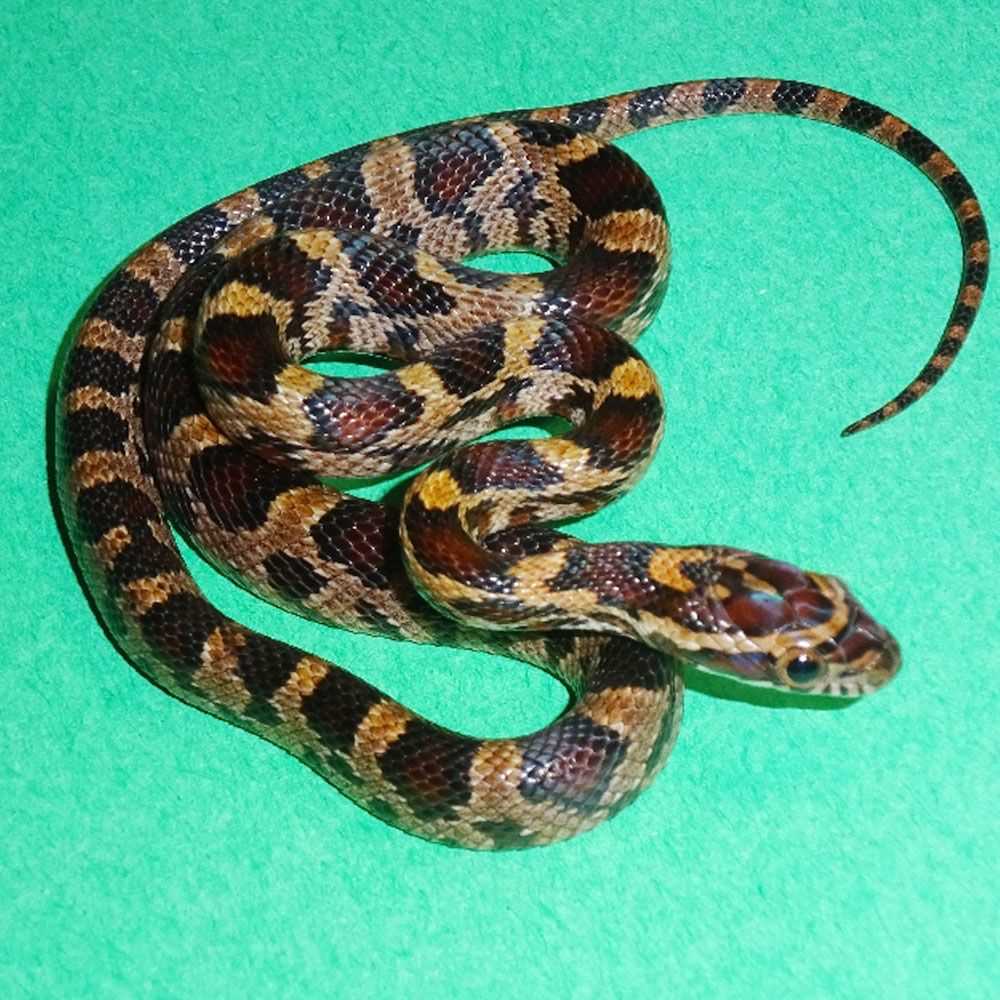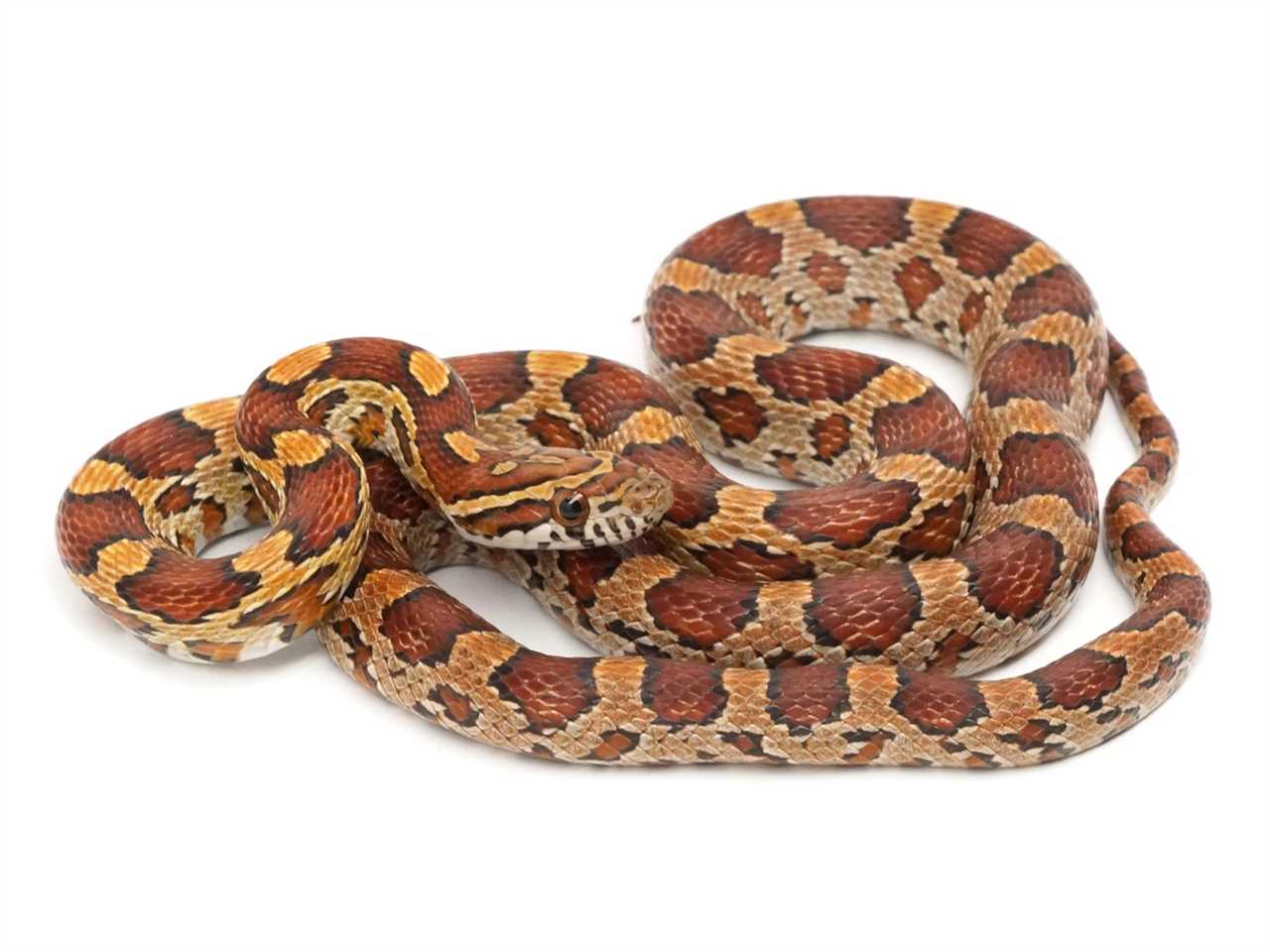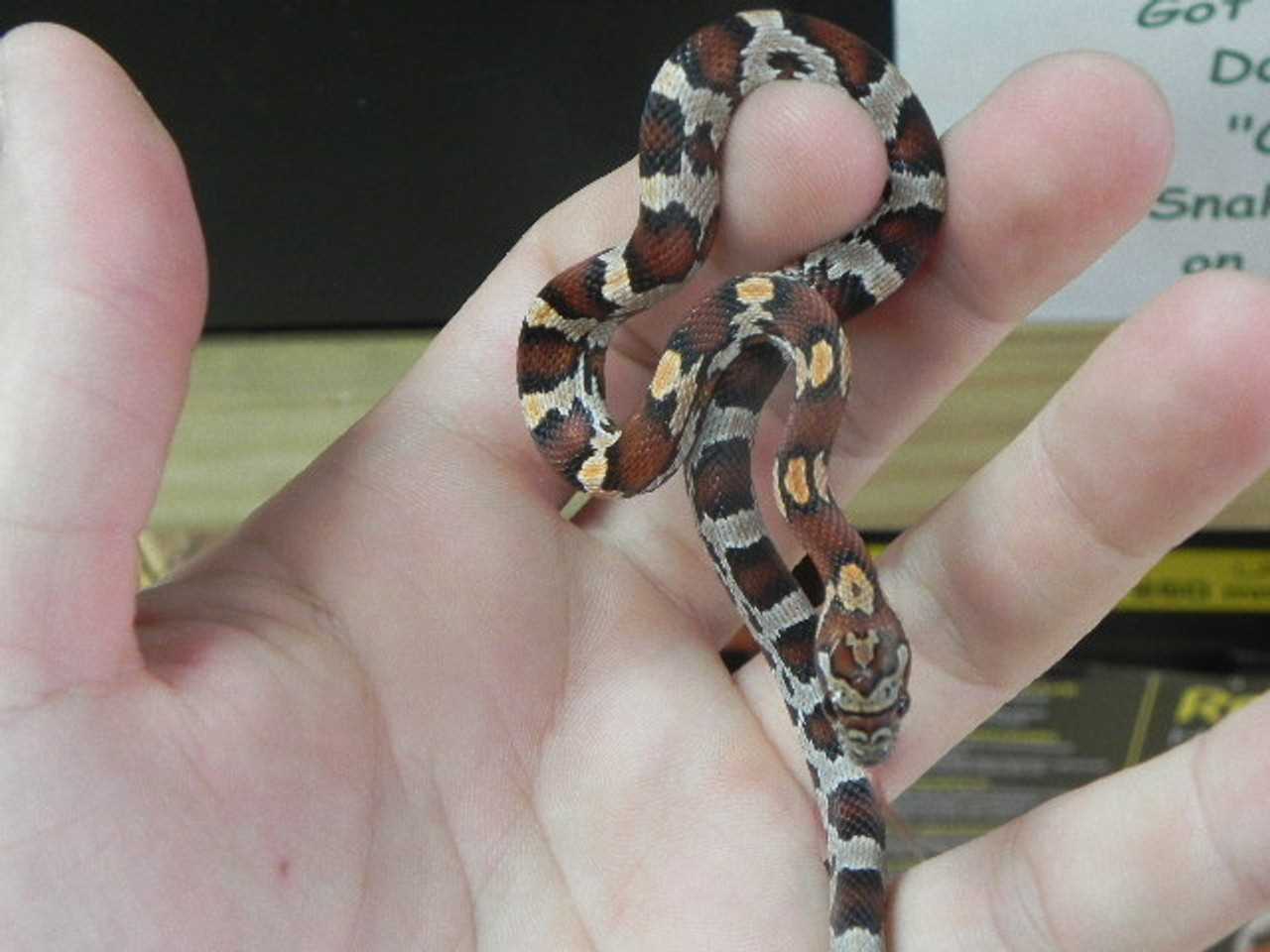One of the defining features of the normal corn snake is its beautiful patterned scales. These snakes typically have a base color of orange or brown with distinctive dark red or brown blotches running along their bodies. The patterns and colors can vary greatly from snake to snake, giving them a unique and mesmerizing appearance. Their scales are smooth to the touch, making them pleasant to handle and observe.
Breeding corn snakes in captivity has become increasingly popular among reptile enthusiasts. It is a rewarding but intricate process that requires careful planning and preparation. Breeding pairs should be healthy and of appropriate age, typically around 3 years old. The female corn snake will lay a clutch of eggs, which need to be incubated under specific conditions until they hatch. The hatchlings can then be cared for until they are ready to be sold or kept as pets.
Overview of the Normal Corn Snake
The normal corn snake has a slender body with a pattern of scales that closely resembles that of a corn cob, hence its name. Its coloration can vary greatly, with most individuals displaying a combination of red, orange, yellow, and black bands or blotches along their body. This natural variation in coloration makes every normal corn snake a unique and beautiful pet to have.
In terms of size, the normal corn snake typically reaches a length of around 4 to 5 feet when fully grown. They have smooth scales that are shiny and generally easy to maintain. These scales, along with their slender body, contribute to the normal corn snake’s overall sleek and attractive appearance.
As for breeding, the normal corn snake is known to be a relatively easy species to breed in captivity. Breeding season typically occurs during the spring and early summer months. Female snakes lay eggs, which need to be incubated at specific temperatures and humidity levels to ensure successful hatching. Proper care and attention must be given to the eggs during this time to increase the chances of successful reproduction.
Discover the Distinctive Look and Features of a Normal Corn Snake
A normal corn snake is a relatively small reptile, typically growing to be around 3 to 5 feet in length. They have a slender body and smooth scales, which give them a sleek and elegant appearance. Their eyes are rounded and have a black pupil with a yellow iris.
Keeping a normal corn snake as a pet requires a suitable terrarium or enclosure. This captive environment should be spacious enough for the snake to move around and exercise. Additionally, it should have a secure lid to prevent any escapes. Providing hiding spots, such as caves or logs, is essential for the snake to feel secure and comfortable.
Overall, normal corn snakes are a wonderful choice for both beginner and experienced reptile owners. With their stunning colors, ease of care, and docile nature, they make captivating pets that can be enjoyed for many years.
Caring for a Normal Corn Snake
Housing and Terrarium
Creating a suitable living environment for your normal corn snake is crucial for its well-being. A terrarium with a secure lid is necessary to prevent escape and to maintain the required temperature and humidity levels. The size of the terrarium should be at least 20 gallons for an adult corn snake.
Provide a substrate such as aspen bedding or reptile carpet for your snake to burrow and move comfortably. Avoid using substrates that could cause impaction, such as sand or small loose particles.
Decorate the terrarium with branches, rocks, and hiding places to mimic the snake’s natural habitat. This will provide the snake with opportunities for climbing, exploring, and hiding, which are essential for their mental and physical well-being.
Temperature and Lighting

Maintaining the proper temperature gradient in the terrarium is essential for normal corn snakes. The ambient temperature should be around 75-85°F (24-29°C), while the basking spot should be between 85-90°F (29-32°C).
Use a thermostat and heat sources such as heat lamps or under-tank heaters to regulate the temperature. It is also essential to provide a temperature gradient by placing the heat source at one end of the terrarium, allowing the snake to thermoregulate by moving between warmer and cooler areas.
Provide a light source that simulates a natural day and night cycle. You can achieve this by using a full-spectrum UVB light for 10-12 hours a day. This light is crucial for the snake’s overall health and calcium metabolism.
Feeding and Nutrition
Normal corn snakes are carnivorous, and their diet primarily consists of appropriately sized rodents such as mice and rats. Feed your snake pre-killed prey to avoid any injuries caused during feeding.
Offering food items that are proportionate to the snake’s size is crucial. A general guideline is to feed juvenile corn snakes one pinkie mouse or an equivalent-sized prey item every 5-7 days. Adult snakes can be fed larger mice or rats every 1-2 weeks.
Make sure to provide a separate feeding enclosure to prevent substrate ingestion during feeding. Offer the prey item using tongs to avoid any accidental bites or mistaking your fingers for food.
Handling and Enrichment
Handling your normal corn snake regularly is important for socialization and habituation. However, always ensure that you wash your hands before and after handling to prevent transmission of any bacteria.
When handling your snake, support its body fully and avoid grasping it by the tail, as this can be stressful and cause injury. Start with short handling sessions and gradually increase the duration as your snake becomes more comfortable.
Enrichment is crucial to keep your snake mentally stimulated. Provide items such as branches, tunnels, and climbing structures to encourage natural behaviors. You can also introduce puzzle feeders or hide food items to promote hunting instincts.
By following these guidelines, you will create a comfortable and enriching environment for your normal corn snake. Remember to observe your snake’s behavior and consult a veterinarian if you notice any signs of illness or abnormal behavior. Enjoy your time with your captivated pet reptile!
Keeping a Normal Corn Snake as a Pet: Proper Care Guide

Creating the Ideal Terrarium
The terrarium should be well-ventilated with a secure lid to prevent the snake from escaping. Providing hiding spots using branches, rocks, or commercial snake hides is essential as well. A substrate such as aspen bedding or cypress mulch can be used for the snake to burrow and hide in.
Feeding and Hydration
Feeding a normal corn snake is relatively straightforward. They are carnivorous and primarily eat mice or rats. Young snakes may require smaller prey items, such as pinky mice, while adults can handle larger prey, like adult mice or rats.
Providing a clean and fresh water source is crucial for the health and hydration of your snake. A shallow water bowl that is large enough for the snake to soak in should be provided in the terrarium. The water should be changed regularly to prevent bacterial growth.
Maintaining Optimal Conditions
Proper humidity is also necessary for the well-being of the snake. Corn snakes require a relative humidity level of around 40-50%. This can be achieved by misting the enclosure with water or using a humidifier if necessary.
Regular Health Check-ups

Regular health check-ups by a reptile veterinarian are essential to ensure the overall well-being of your normal corn snake. During these check-ups, the vet can assess the snake’s general health, check for any signs of illness or parasites, and provide necessary vaccinations or treatments.
By following these guidelines for the proper care of your normal corn snake, you can provide them with a healthy and happy life in captivity. Remember to do your research and educate yourself about snake care, as each individual snake may have specific requirements.
Breeding Normal Corn Snakes
Breeding normal corn snakes in captivity can be a rewarding experience for snake enthusiasts. These colorful and popular pets are relatively easy to breed, and it can be fascinating to observe the entire reproductive process, from courtship to the care of the eggs.
The breeding season for corn snakes usually occurs in the cooler months, typically from late fall to early spring. It is during this time that the male snake will become more active and display courtship behavior, such as rubbing against objects in the terrarium and flicking his tongue.
After successful mating, the female corn snake will lay a clutch of eggs within two to four weeks. It is essential to provide her with a suitable nesting box filled with moist substrate, such as vermiculite or sphagnum moss. The eggs should be carefully transferred to an incubator and kept at a consistent temperature of around 82-85°F (28-29°C).
The incubation period for corn snake eggs usually ranges from 55 to 65 days, depending on the specific temperature conditions. During this time, it is crucial to maintain the proper humidity levels and periodically check the eggs for any signs of mold or fungus. It is advisable to mark the eggs with a non-toxic pen to track their progress.
Once the eggs hatch, they will produce miniature versions of the adult corn snakes. It is essential to provide the hatchlings with a suitable enclosure, with appropriate temperature and humidity levels. The hatchlings should be fed appropriately-sized pinky mice or other suitable prey items.
Caring for a Normal Corn Snake
Temperature and humidity are crucial factors to consider in creating the perfect environment for your captive corn snake. The ambient temperature in the terrarium should be around 80-85°F, with a warmer basking spot of 85-90°F. Use an under-tank heating pad or a heat lamp to provide the necessary warmth.

I’m Lena Adams—a product of an unconventional upbringing in the African wilderness. My father, a daring explorer of African wildlife, sparked my fascination with reptiles, a passion that intertwined with the tragic loss of my mother during an expedition, leaving an indelible mark on my life. Driven to understand the creatures that captivated my parents, I embarked on my journey, sharing insights about reptiles, frogs, and lizards on my website. Through my explorations and conservation efforts, I honour my family’s legacy while seeking connections—to the creatures, nature, and the mother whose presence I yearn to understand.
